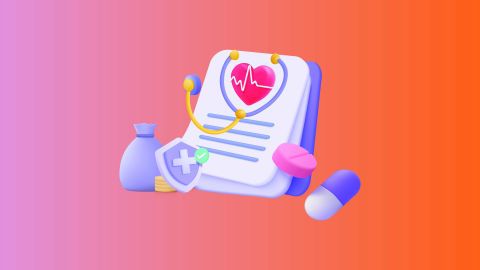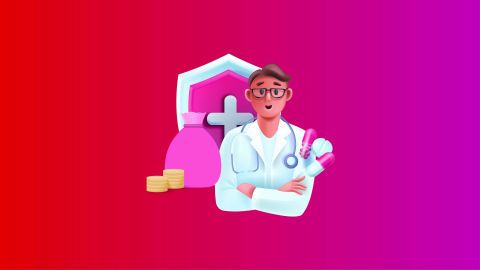A defibrillator is a critical medical device that delivers a controlled electric shock to restore a normal heartbeat during life-threatening conditions such as ventricular tachycardia or ventricular fibrillation. It consists of key components like electrodes, capacitors, a battery, and a microprocessor. Different types are available, including AEDs, ALS defibrillators, ICDs, WCDs, and manual versions. Using a defibrillator requires quick action, proper handling, and essential safety measures. This guide explains how the device works, step-by-step usage, post-shock recovery, benefits, limitations, how to choose the right model, pricing details, and financing options to support emergency readiness.
What is a defibrillator?
A defibrillator is a vital medical device that delivers a controlled electric shock to the heart to stop a dangerous, irregular rhythm and help it return to a normal beat. This sudden therapeutic shock interrupts life-threatening arrhythmias originating in the ventricles. The two critical rhythms it treats are:
- Pulseless Ventricular Tachycardia (VT): An extremely fast but ineffective heart rhythm that prevents proper blood circulation.
- Ventricular Fibrillation (VF): A chaotic, quivering electrical activity in the ventricles that stops the heart from pumping blood altogether.
Components of a defibrillator
A defibrillator is a life-saving medical device used to deliver an electric shock to the heart in cases of cardiac arrest or arrhythmia. It consists of several key components, each playing a crucial role in its functionality.
- Battery: Provides power to the defibrillator for delivering shocks.
- Capacitors: Store electrical energy and discharge it rapidly to deliver a shock.
- Electrodes: Pads placed on the patient's chest to deliver the electric shock to the heart.
- Control panel: Interface for selecting shock energy levels and initiating the shock delivery process.
- Microprocessor: Controls the timing and intensity of shocks, ensuring proper synchronisation with the heart's rhythm.
Together, these components enable defibrillators to quickly and effectively restore normal heart rhythm, potentially saving lives in emergency situations. In many clinical setups, supporting equipment is essential for emergency preparedness. Autoclaves play a vital role in ensuring sterile instruments are always ready for such life-saving interventions.
How to use a Defibrillator?
To use an automated external defibrillator (AED), the key is to follow the voice prompts, which guide you step by step. AEDs are designed for public use, even by untrained bystanders, making them safe and reliable in emergencies.
They are used when a person is unresponsive, not breathing normally, and has no pulse—signs of sudden cardiac arrest.
Basic steps include:
Assess the person and call emergency services
Begin chest compressions if the person is not breathing normally
Switch on the AED and follow its instructions
Expose the chest and attach the AED pads
Stand clear during rhythm analysis
Deliver a shock if advised, then continue CPR
Special precautions apply when using AEDs on children, individuals with pacemakers, or in wet environments. While AEDs are simple to use, certified training is strongly recommended.
Why is a defibrillator used?
While Cardiopulmonary Resuscitation (CPR) provides temporary circulation and oxygen to the brain, only a defibrillator can deliver the electrical shock needed to correct sudden cardiac arrest caused by VT or VF. It remains safe to use even on individuals with an implanted pacemaker or ICD. In many emergency cases, timely defibrillation, supported later by diagnostic tools like CBC blood analysis, helps doctors assess overall health and guide further treatment.
Types of defibrillators
Defibrillators come in various types, each tailored to specific medical needs. Automated External Defibrillators (AEDs) are portable and user-friendly, designed for quick response in non-medical settings. Advanced Life Support (ALS) Defibrillators provide medical professionals with advanced monitoring and intervention capabilities. Implantable Cardioverter-Defibrillators (ICDs) are surgically implanted devices that continuously monitor and regulate heart rhythms, providing long-term protection. Wearable Cardioverter-Defibrillators (WCDs) offer temporary external protection for individuals at risk. Manual External Defibrillators, operated by healthcare professionals, allow for precise control. These diverse defibrillator types ensure that appropriate interventions are available for various cardiac scenarios. Medical equipment must comply with national standards before being deployed. Regulatory approval from CDSCO is essential to ensure defibrillators meet safety and performance requirements.
Limitations of using a defibrillator
- Response time: Defibrillators must be used promptly, and delays in administering treatment can reduce their effectiveness.
- Not effective for all conditions: Defibrillators are designed to treat specific cardiac arrhythmias and may not be effective for other medical emergencies.
- Training requirement: Proper training is essential for using a defibrillator safely and effectively, which may limit its accessibility in some situations.
- Risk of injury: Improper use of a defibrillator can lead to injuries such as burns or skin irritation, especially if electrodes are not applied correctly.
- Limited availability: Defibrillators may not be readily available in all public places or emergencies, limiting their accessibility when needed most.
For patients with chronic conditions like kidney failure, having access to dialysis machines alongside defibrillators in critical care settings enhances emergency preparedness and holistic treatment outcomes.
Automated External Defibrillators (AEDs)
Portable and user-friendly devices, AEDs are designed for non-medical professionals. They analyze the heart's rhythm and provide audible instructions for administering a shock if necessary.
Advanced Life Support (ALS) defibrillators
Used by medical professionals, ALS defibrillators offer more features and options for monitoring and managing cardiac issues, suitable for advanced medical interventions.
Implantable Cardioverter-Defibrillators (ICDs)
ICDs are surgically implanted devices that continuously monitor and regulate heart rhythms, delivering shocks when abnormal rhythms are detected.
Wearable Cardioverter-Defibrillators (WCDs)
Worn externally, WCDs provide a temporary solution for individuals at risk of sudden cardiac arrest, offering protection until a long-term solution is determined.
Manual External Defibrillators
Operated by healthcare professionals, manual external defibrillators allow for more control over the delivery of shocks and are used in more complex medical situations.
Who can use a defibrillator?
Defibrillation is essential for treating the dangerous heart rhythms mentioned above. In India, this support is provided in two primary settings:
- Hospitals and clinics: Where trained medical professionals use manual or advanced defibrillators.
- Public places: Such as airports, railway stations, malls, and offices where AEDs are installed for use by trained bystanders.
People who are at a long-term or high risk of sudden cardiac arrest may also need a personal device for continuous protection.
Recovery time after defibrillator use
Recovery after a cardiac arrest and defibrillation is a long and gradual journey, often taking several months and sometimes years. Many survivors—around 40%—face difficulties that prevent them from immediately returning to normal routines or work after leaving the hospital.
Common challenges during recovery include:]
- Fatigue: Ongoing tiredness that limits physical and mental activity.
- Physical injuries: Issues such as rib fractures resulting from CPR may take time to heal.
- Neurological problems: Some individuals may experience difficulty walking, memory issues, or seizures due to reduced oxygen supply during the arrest.
Most patients benefit from a multidisciplinary rehabilitation plan involving physical, occupational, and sometimes speech therapy to support long-term recovery.
Procedure for using a defibrillator
To use a defibrillator effectively, follow these steps:
Turn on the device: Locate the power button on the defibrillator and switch it on. Some models may have additional steps, such as pressing and holding a power button or inserting a key.
Attach electrode pads to the patient's chest: Remove the protective packaging from the electrode pads and place them firmly on the patient's bare chest, following the placement guidelines indicated on the pads. Ensure that the pads are positioned correctly to optimise electrical conductivity.
Follow the device's prompts for analysis: Once the electrode pads are attached, the defibrillator will begin analysing the patient's heart rhythm. Stand clear of the patient and allow the device to complete its analysis. During this time, the defibrillator will determine whether a shock is necessary.
Administer a shock if advised: If the defibrillator detects a shockable rhythm, it will prompt you to administer a shock. Before delivering the shock, ensure that no one is touching the patient and announce "clear" to alert others to stand clear of the patient. Press the shock button as instructed by the device. After delivering the shock, resume CPR immediately according to the device's guidelines or follow standard CPR protocols.
Remember to remain calm and focused while using the defibrillator, and continue to follow any further instructions provided by the device or emergency responders. Early intervention with a defibrillator can greatly improve the chances of survival for someone experiencing cardiac arrest.
How a defibrillator works
Defibrillation works by delivering a controlled electric shock strong enough to temporarily stop all abnormal electrical activity in the heart. This brief pause allows the heart’s natural pacemaker to reset and restore a normal rhythm - essentially giving the heart a “reboot.”
The procedure, whether using a hospital defibrillator or a public AED, generally involves the following steps:
- Continue CPR: Chest compressions should continue until the device is ready to deliver a shock.
- Ensure safety: Before delivering the shock, confirm that no one is touching the patient or their surroundings.
- Using a manual defibrillator:
- Place either paddles or adhesive pads on the chest - one below the right collarbone and the other below the left nipple.
- Paddles require conductive gel to prevent skin burns, while adhesive pads already include it.
- The shock is delivered through the machine’s button (pads) or by pressing both paddle buttons simultaneously.
- Using an AED:
- The AED analyses the heart rhythm automatically and determines if a shock is required.
- It provides voice prompts to guide pad placement and instructs when to deliver the shock.
Advantages of a defibrillator
- Life-saving: Defibrillators are capable of restoring normal heart rhythm in cases of cardiac arrest, potentially saving lives.
- Accessibility: With the increasing availability of automated external defibrillators (AEDs) in public spaces, such as airports, schools, and sports facilities, prompt intervention is possible, even before emergency medical services arrive.
- Ease of use: Many modern defibrillators, especially AEDs, are designed for use by non-medical personnel. They provide clear audio and visual prompts, making them accessible to laypeople during emergencies.
- Portability: Defibrillators are available in compact, portable designs, allowing for quick deployment in various settings, including homes, workplaces, and public areas.
- Reduced response time: The immediate availability of a defibrillator can significantly reduce the time to treatment, increasing the likelihood of a positive outcome for the patient.
- Improved survival rates: Studies have shown that early defibrillation, within the first few minutes of cardiac arrest, can substantially improve survival rates and reduce the risk of long-term complications.
What happens after using a defibrillator?
Immediately after the shock, the first responder or provider will:
- Resume CPR: Right after delivering the shock, the responder immediately continues CPR for about two minutes to help the heart regain effective circulation.
- Reassess the patient: After the CPR cycle, they check for a pulse and evaluate the heart rhythm again to see if it has stabilised.
- Next steps if rhythm is still abnormal: If the heart has not returned to a normal rhythm, CPR is continued, and additional shocks may be given. Medicines such as epinephrine or amiodarone may also be administered to support rhythm correction.
- Post-arrest care: If blood flow returns but the patient remains unconscious, the team may use targeted temperature management by cooling the body to around 32°C to 36°C. This helps protect the brain. Once the patient is stable, further evaluation, like cardiac catheterisation, may be done to identify the underlying cause of the arrest.
Choosing the right defibrillator machine
To select the right defibrillator, it is important to prioritise usability, safety, durability, and overall value. Choose a device that offers clear instructions, dependable performance, and features suited to the intended setting and users. If paediatric use is a possibility, ensure the device supports it. Strong warranty coverage, compliance with regulations, and proper training with ongoing support are also essential for effective and safe use.
Key factors to consider:
Ease of use: Clear visual and audio prompts suitable for users with minimal training
Environment: Water-resistant, dustproof, or high IP-rated models for outdoor or challenging conditions
User type: Options between fully automatic (auto shock) and semi-automatic (manual shock button) models
Paediatric use: Availability of paediatric pads, a child key, or child mode, where children may need treatment
Durability: Rugged, impact-tested devices designed for demanding environments
Readiness: Long-life batteries and pads, built-in self-checks, and remote monitoring capability
Advanced features: CPR guidance, feedback systems, and ECG or event data recording
Training: Access to proper training for safe and confident operation
Cost: Consider overall ownership, including accessories and replacement parts
Warranty and support: Dependable warranty terms with responsive service support
Compliance: Must meet local safety and regulatory standards
Defibrillator machine pricing
Defibrillator prices vary based on type and features. Research different models and suppliers for the best value.
Financing options for purchasing defibrillator machine
Explore financing options, such as medical equipment loans, to make defibrillator purchases more accessible. Bajaj Finance offers medical equipment financing, including defibrillators.
Having a defibrillator can be a life-saving investment, offering prompt intervention in cardiac emergencies. Understanding the types, proper usage, and financing options ensures preparedness for critical situations. Explore Bajaj Finserv Doctor Loan and loan for professionals for comprehensive financial solutions in the medical field.




